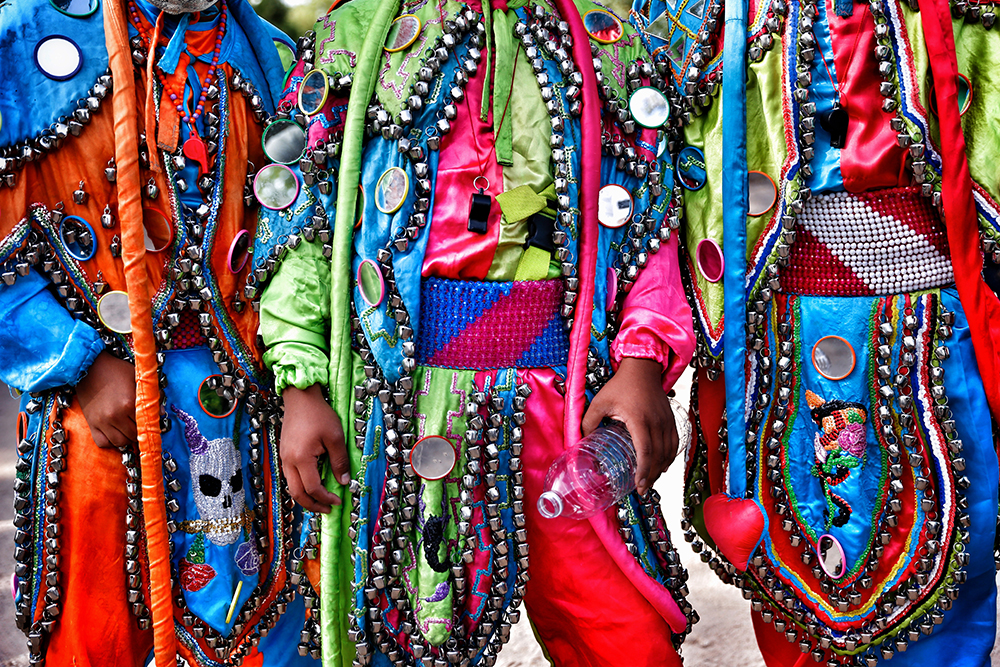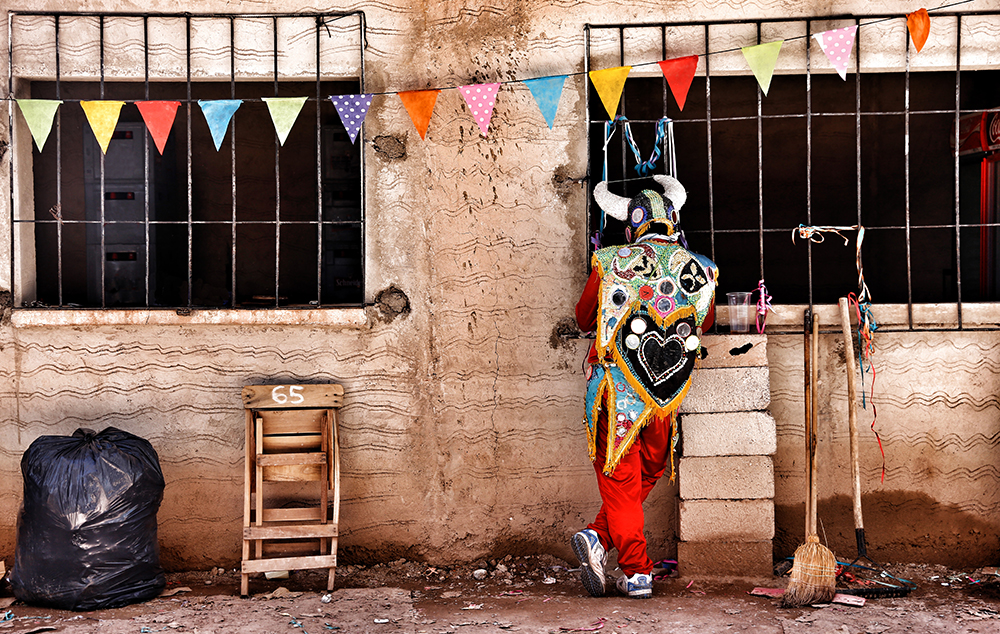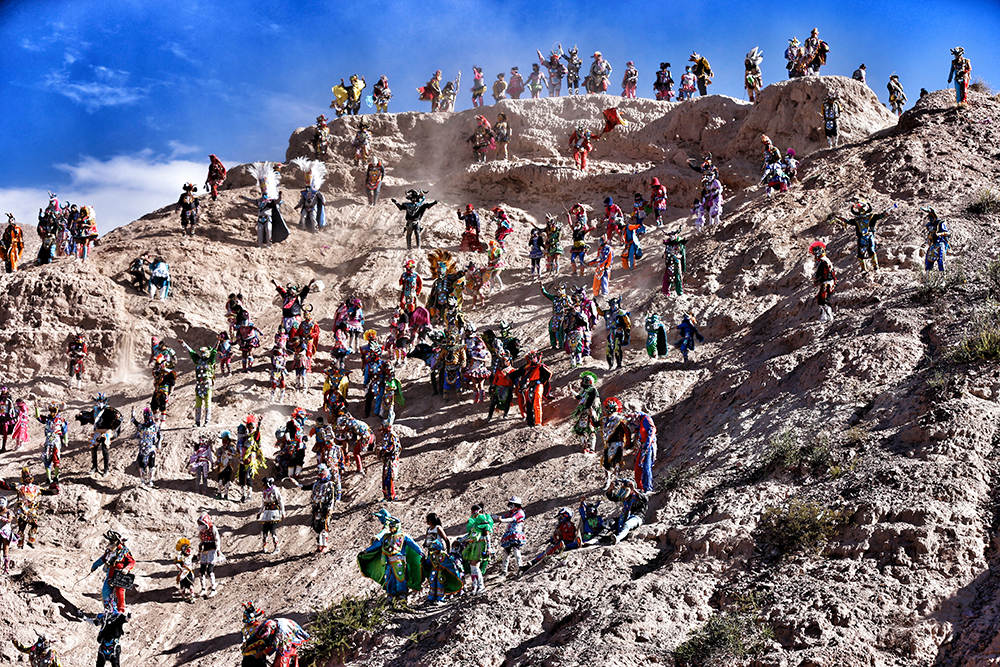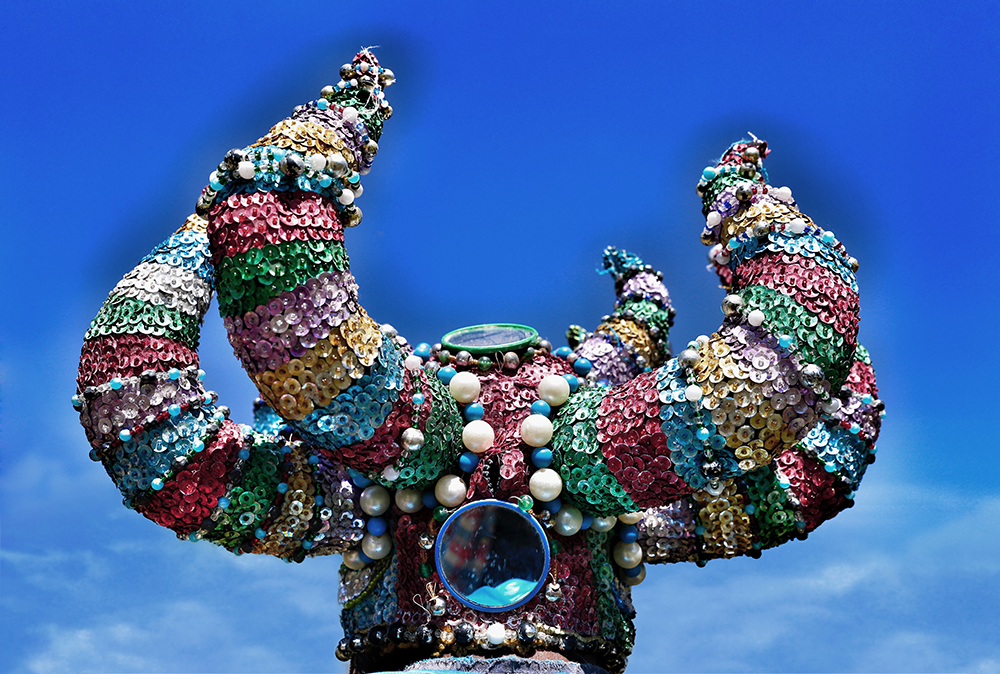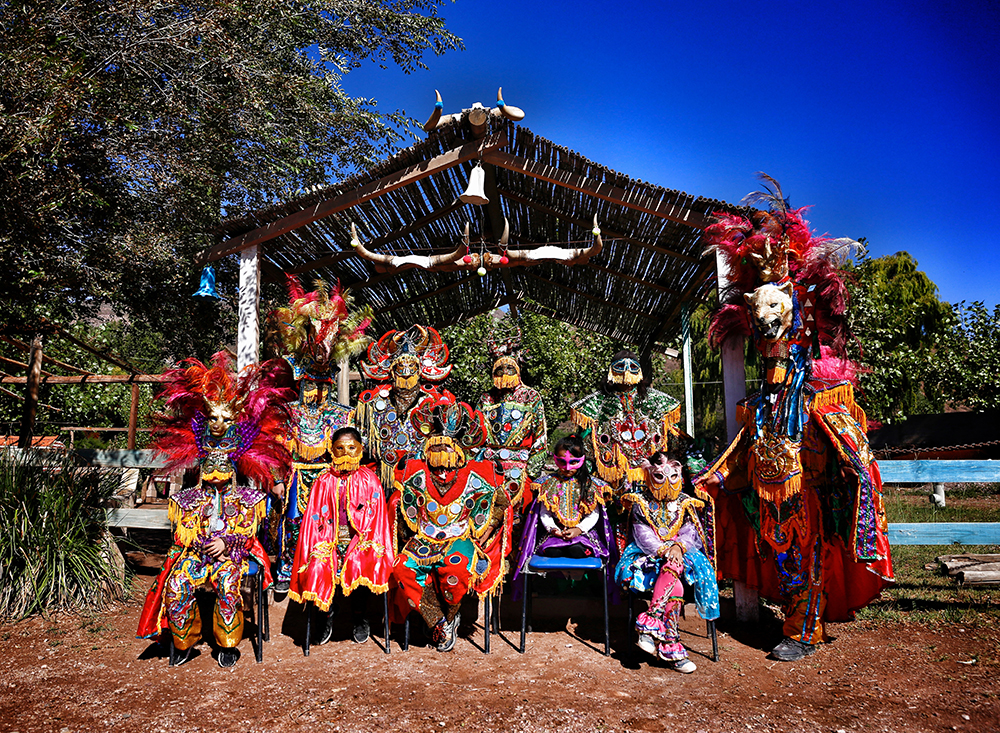LA DIABLADA
Según la cosmovisión andina la Naturaleza, el Hombre y la Pachamama (Madre Tierra) viven en perpetua relación. Esa totalidad es, para la cultura andina, un solo ser vivo.
El Hombre es un alma y tiene una fuerza vital que está presente en las plantas, los animales, las montañas y en todas las corrientes de vida. Siendo que el hombre es la naturaleza misma no la domina ni pretende dominarla. Solo convive y existe como un momento en ella.
La diablada no es una comparsa, es mucho más que eso.
Sus objetivos tienen que ver con mantener viva la tradición que se realiza desde hace varias generaciones en la localidad quebradeña y con rescatar todo lo que hace a la cultura del disfraz del diablito.
Los disfraces se inspiran en la iconografía andina y en lo que nos contaban nuestros abuelos sobre el personaje mítico del diablo. Gatos, lobos, la serpiente, así como las visiones, sueños e historias pasadas y presentes, todo en lo andino, tiene un significado místico.
Todo se mezcla en las diabladas, todo vale a la hora de crear el traje que que cada uno de los diablos va a lucir durante los ocho días y nueve noches en los que transcurre el carnaval.
DIABLO NO ES UN DISFRAZ, ES UN SENTIMIENTO.
SER DIABLO ES UN PORTAL PARA DESPRENDERSE DE LOS ASPECTOS NEGATIVOS QUE SE REPRIMIERON DURANTE TODO EL AÑO.
SER PARTE DE LA DIABLADA ES ALGO QUE SE HEREDA DE GENERACIÓN EN GENERACIÓN, LO MISMO QUE EL SENTIDO PROFUNDO DE SER UNO CON EL TRAJE. CADA AÑO EL TRAJE SE RENUEVA, ASÍ COMO TAMBIÉN SE RENUEVA LA PROMESA A LA PACHAMAMA Y EL AGRADECIMIENTO POR LOS TESOROS RECIBIDOS.
El diablo invierte hasta sus últimos ahorros para la confección de su traje, así como también se brinda él mismo. Horas y horas cosiendo en soledad dando vida a lo que será el personaje que lo liberará, por un tiempo, de preocupaciones y le brindará la oportunidad de ser felíz y hacer felices a los otros.
La revalorización de las culturas originarias y la reafirmación étnica, tal como se manifiestan actualmente entre los pueblos andinos, son una consecuencia de la toma de conciencia de miles de hombres y mujeres, que redescubrieron los tesoros que nos dejaron nuestros ancestros.
Gaby Herbstein
Febrero 2017
LA DIABLADA
According to the Andean worldview, Nature, Man and Pachamama (Mother Earth) live in perpetual relationship as one whole being.
Man as a soul, has life force, and so do plants, animals, mountains, and every form of existence. Since man is part of nature himself, he doesn’t pretend to dominate it. He just exists and coexists as a moment of it.
«La Diablada» is much more than a carnival dance.
As well as including the joy and the offering of a carnival, it has to do with keeping alive an important local tradition and ensuring that the devil costume, that has been present for several generations in the Argentinian Quebrada, continues.
The costumes are inspired by the Andean iconography and the stories our grandparents told us about the mythical character of the devil. Cats, wolves, the serpent, as well as visions, dreams, past and present stories all have a mystical meaning. All of this is part of La Diablada whereby anything and everything goes in the process of creating the costume that each of the devils will display during the eight days and nine nights of the carnival.
DEVIL IS NOT A COSTUME, IT IS A FEELING. BEING DEVIL IS A PORTAL, A WAY TO BE RID OF ALL THE NEGATIVITY THAT HAS BEEN REPRESSED DURING THE WHOLE YEAR. BEING PART OF LA DIABLADA AND THE DEEP SENSE OF BEING ONE WITH THE COSTUME IS SOMETHING THAT IS INHERITED FROM GENERATION TO GENERATION.
EACH YEAR THE COSTUME IS RENEWED, AS WELL AS THE PROMISE TO THE PACHAMAMA AND GRATEFULNESS FOR THE RECEIVED TREASURES.
The devil invests all of his savings to make the suit and he offers himself. He spends hours and hours sewing in solitude to develop what will be the character that will release him for a time of his preoccupations. It will give him the opportunity to be happy and make others happy.
The revalidation of original culture and ethnic reaffirmation, is currently resurging amongst the Andean peoples as a consequence of the increased awareness of thousands of men and women, who have discovered the cultural treasures left by our ancestors.
Gaby Herbstein
February 2017

